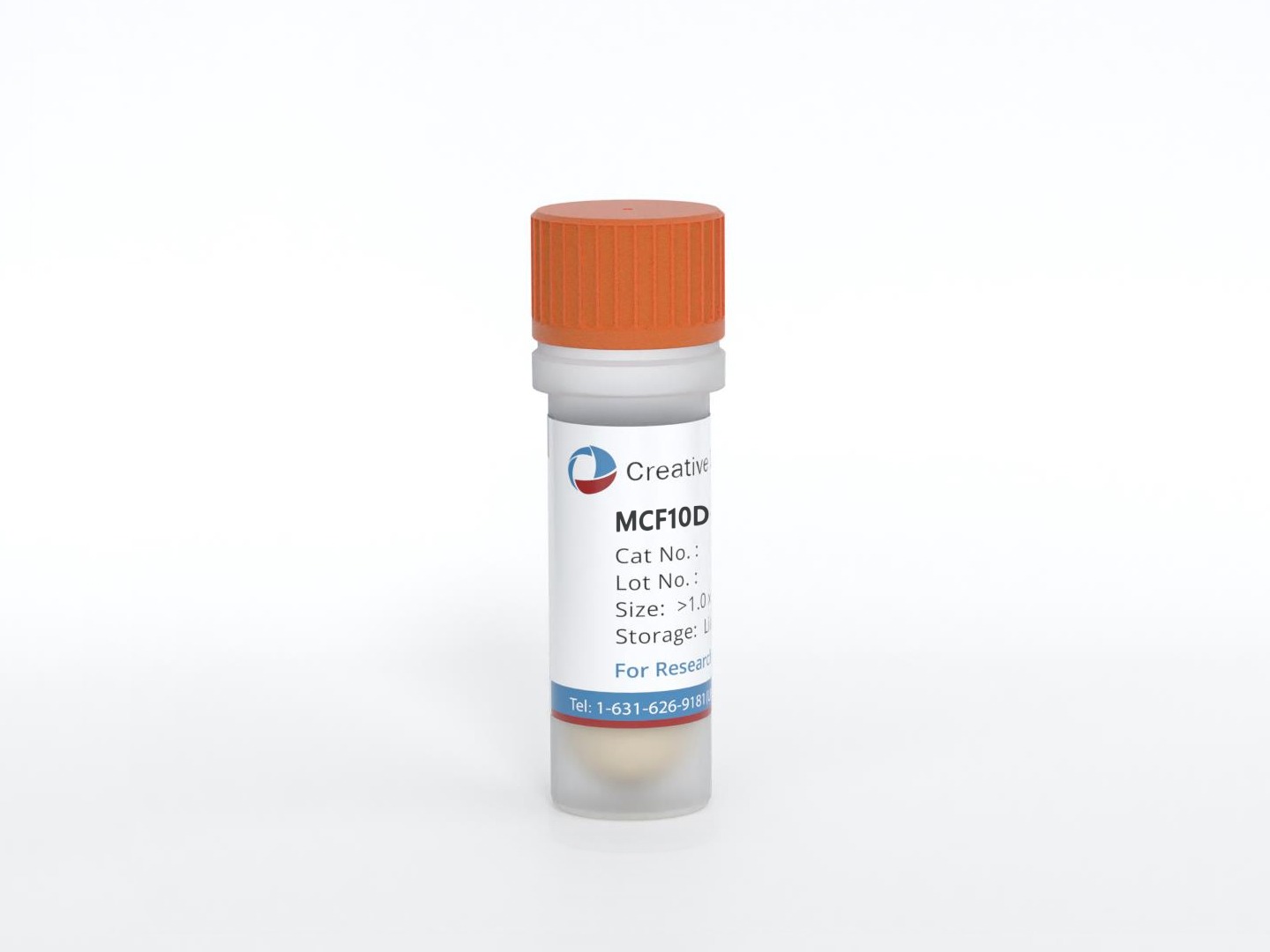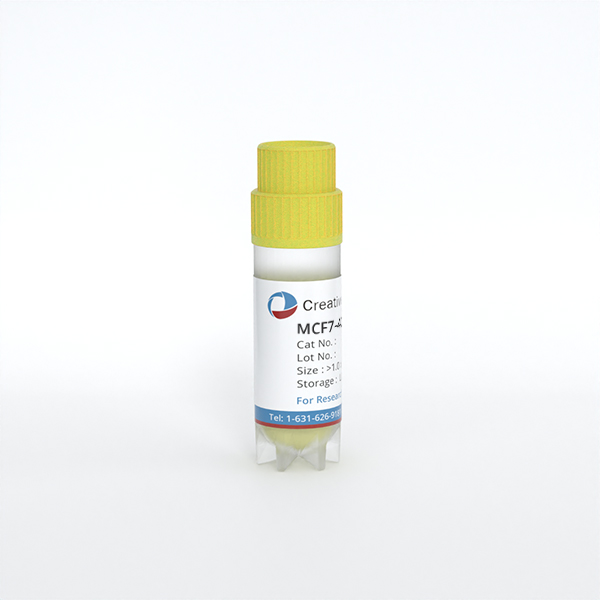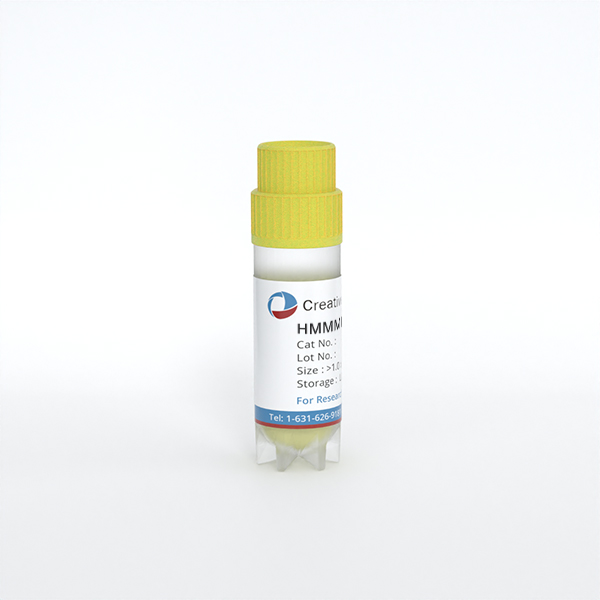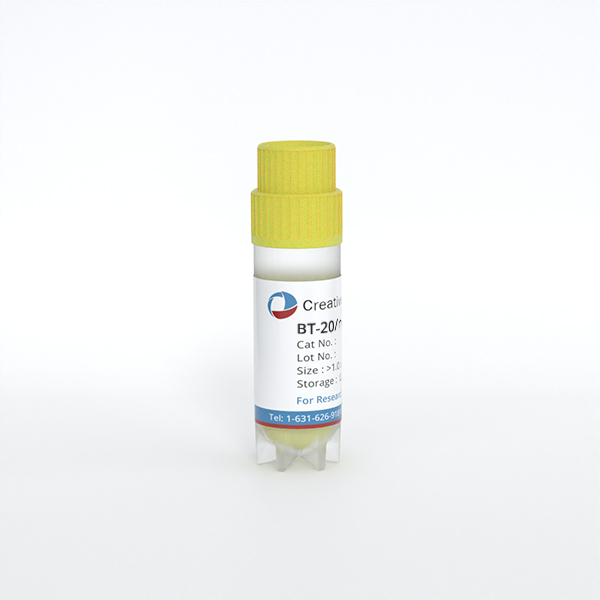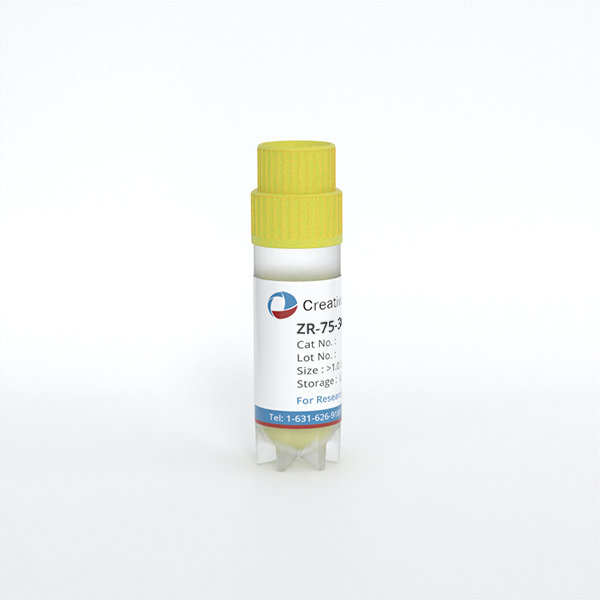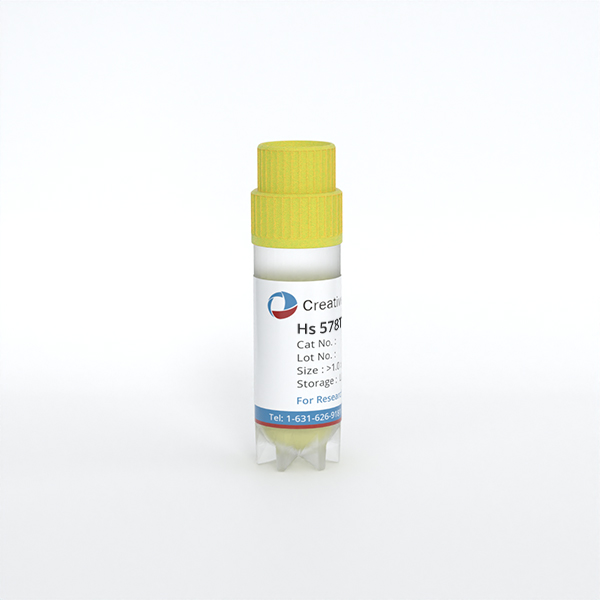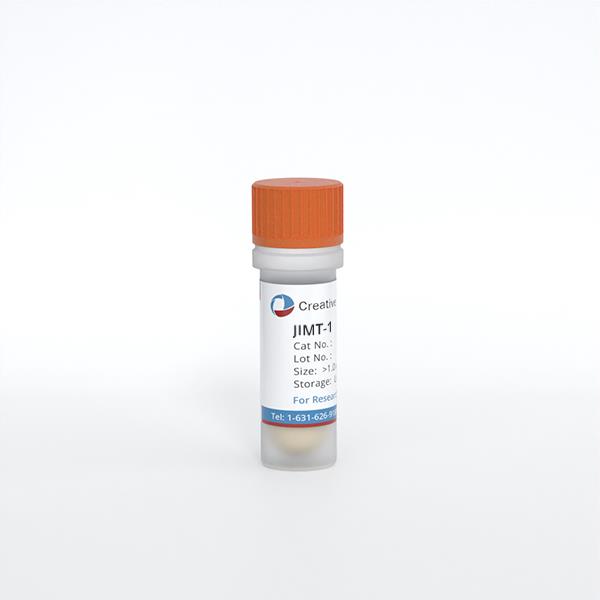
JIMT-1
Cat.No.: CSC-C0592
Species: Homo sapiens (Human)
Source: Pleural Effusion
Morphology: epithelial-like cells growing in monolayers
Culture Properties: monolayer
- Specification
- Background
- Scientific Data
- Q & A
- Customer Review
Immunology: cytokeratin +, cytokeratin-7 +, cytokeratin-8 +, cytokeratin-17 -, cytokeratin-18 +, cytokeratin-19 +, desmin -, endothel -, EpCAM +, GFAP -, neurofilament -, vimentin -
Viruses: PCR
The JIMT-1 cell line is derived from a HER2-positive human breast carcer and is known for its resistance to trastuzumab, a commonly used HER2-targeted therapy. This makes JIMT-1 a valuable model for studying mechanisms of resistance to anti-HER2 treatments and for developing new therapeutic strategies.
Unlike many other HER2-positive breast cancer cell lines, JIMT-1 is able to mimic clinical cases where initial responses to HER2-targeted therapies are observed, but resistance subsequently develops. This property makes it important in exploring the efficacy of new drugs and combination therapies designed to overcome trastuzumab resistance. JIMT-1 cells have also been used to investigate the interaction between HER2 and other signaling pathways, such as those involving the epidermal growth factor receptor (EGFR). The cross-talk between these pathways leads to cell resistance to conventional therapies. Studies has shown that JIMT-1 cells respond variably to different tyrosine kinase inhibitors (TKIs) and antibody-drug conjugates (ADCs). For example, while the cell line exhibits resistance to trastuzumab-emtansine (T-DM1), it shows only partial sensitivity to newer drugs like trastuzumab-deruxtecan (T-DXd).
In vitro studies highlight the versatility of JIMT-1 in screening drugs targeting not only HER2 but also other molecular pathways. These studies provide key data for evaluating the synergistic effects of combination therapies involving TKIs and ADCs or novel targeted therapies.
HER2-Specific CAR NK Cells Successfully Recognize and Kill Trastuzumab-Resistant and Sensitive HER2-Positive Target Cells
Monoclonal antibody therapies for HER2-positive tumors frequently encounter resistance, requiring alternative treatment strategies. This study investigates the use of natural killer (NK) cells expressing HER2-specific chimeric antigen receptor (CAR) to address this issue.
To investigate the in vitro HER2-CAR NK cell activation, we measured the release of IFNγ and cytotoxicity towards target cells as key effector functions. Incubation with HER2+ target cells (MDA-HER2, JIMT-1, or N87) induced IFNγ release by all types of HER2-specific CAR NK cells, indicating NK cell activation (Fig. 1a, MDA-HER2, JIMT-1, N87). In cocultures with trastuzumab-resistant, CD44+ MDA-HER2, and JIMT-1 cells, all types of HER2-CAR constructs induced a higher amount of IFNγ secretion than in trastuzumab-sensitive CD44− N87 cocultures. CD28.41BB.z CAR NK cells secreted the highest amount of cytokine in all cocultures.
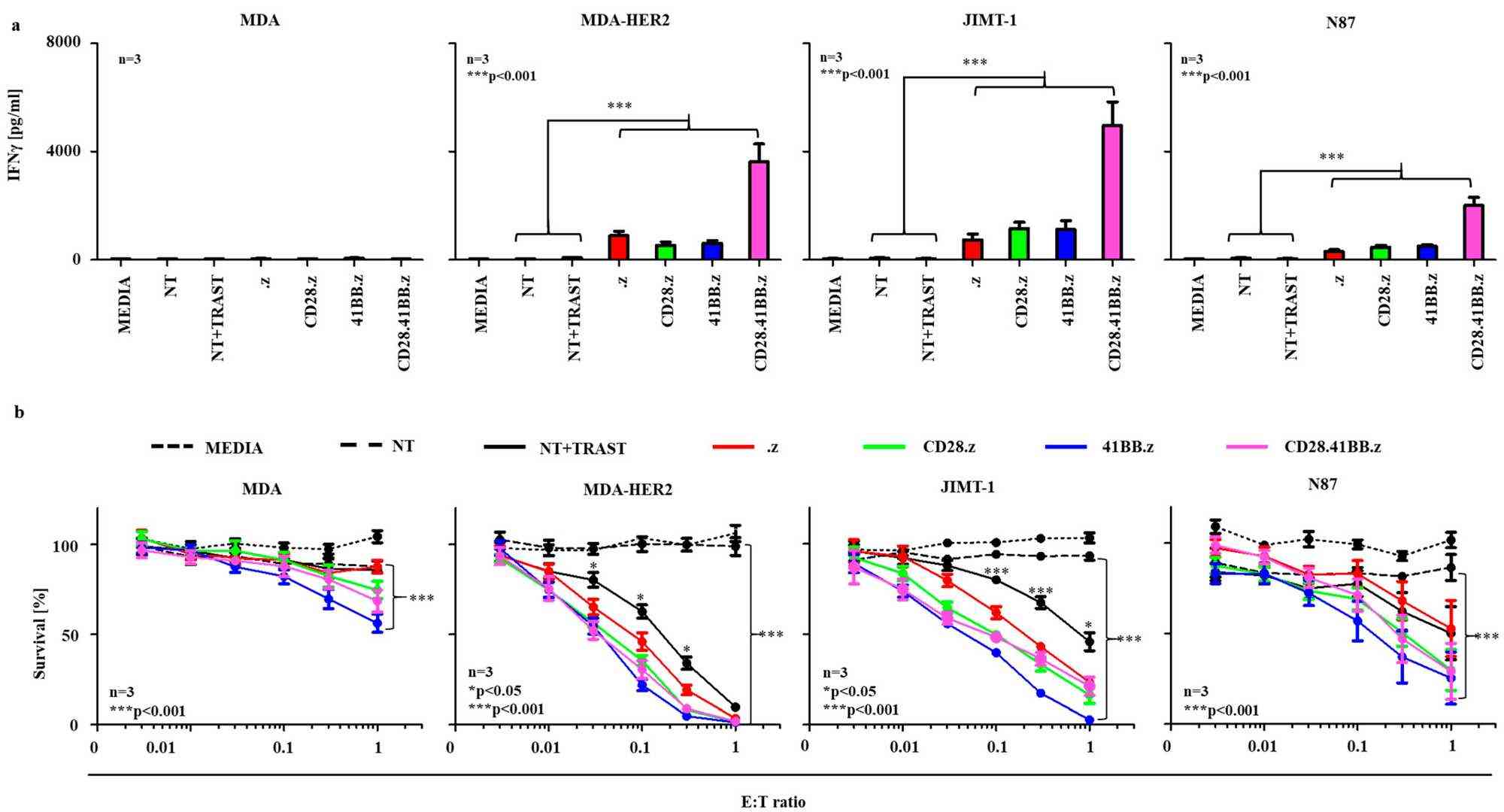 Fig. 1. HER2-specific CAR NK cells successfully recognized and killed HER2-positive target cells (Gergely, Bence, et al. 2025).
Fig. 1. HER2-specific CAR NK cells successfully recognized and killed HER2-positive target cells (Gergely, Bence, et al. 2025).
Evaluation of Potency and Specificity of Cryptophycin-Loaded Antibody-Drug Conjugates
An enhanced variant of the antimitotic toxin cryptophycin was conjugated to the anti-Her2 monoclonal antibody (mAb) Trastuzumab upon Michael addition. Either antibodies with freed hinge-region cysteines or THIOMAB formats with engineered cysteines in the mAbs light chain were added to a maleimide derivative of cryptophycin. These Antibody-Drug Conjugates (ADCs) showed retained binding to Her2 positive tumor cells and highly efficient cell killing in double-digit pM range on high Her2-expressing SK-BR-3 cells. Two ADCs (DAR 6, DAR 3) showed superior cell killing of the cell lines JIMT-1 and RT112 with medium receptor expression level in comparison with a DAR 6 MMAE ADC serving as reference. The observed cell cytotoxicity is target-dependent since no impact on cell viability was observed for low Her2-expressing MDA-MB468 cells. Particularly the DAR 3 ADC in THIOMAB format exhibiting desirable biophysical properties and high potency emerged as a promising candidate for further in vivo investigations.
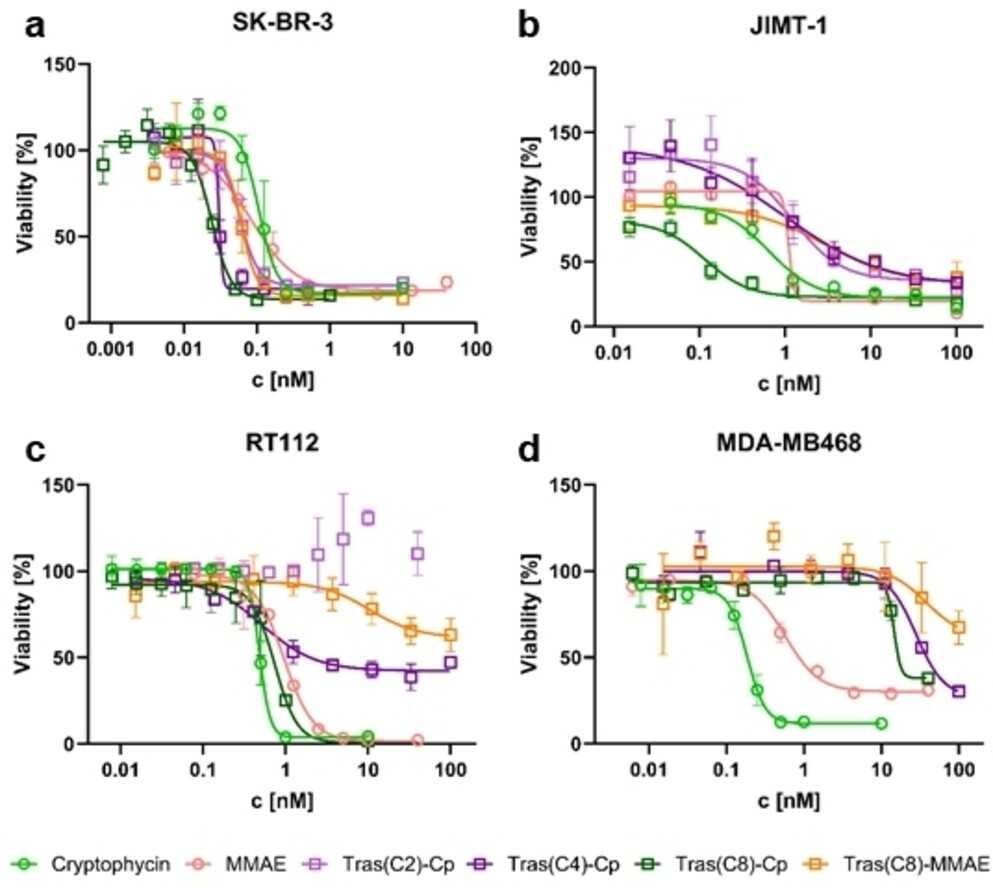 Fig. 2. Cellular proliferation assay on SK-BR-3, JIMT-1, RT112, and MDA-MB468 cells (Bitsch, Peter, et al. 2025).
Fig. 2. Cellular proliferation assay on SK-BR-3, JIMT-1, RT112, and MDA-MB468 cells (Bitsch, Peter, et al. 2025).
Ask a Question
Write your own review
- You May Also Need
- Adipose Tissue-Derived Stem Cells
- Human Neurons
- Mouse Probe
- Whole Chromosome Painting Probes
- Hepatic Cells
- Renal Cells
- In Vitro ADME Kits
- Tissue Microarray
- Tissue Blocks
- Tissue Sections
- FFPE Cell Pellet
- Probe
- Centromere Probes
- Telomere Probes
- Satellite Enumeration Probes
- Subtelomere Specific Probes
- Bacterial Probes
- ISH/FISH Probes
- Exosome Isolation Kit
- Human Adult Stem Cells
- Mouse Stem Cells
- iPSCs
- Mouse Embryonic Stem Cells
- iPSC Differentiation Kits
- Mesenchymal Stem Cells
- Immortalized Human Cells
- Immortalized Murine Cells
- Cell Immortalization Kit
- Adipose Cells
- Cardiac Cells
- Dermal Cells
- Epidermal Cells
- Peripheral Blood Mononuclear Cells
- Umbilical Cord Cells
- Monkey Primary Cells
- Mouse Primary Cells
- Breast Tumor Cells
- Colorectal Tumor Cells
- Esophageal Tumor Cells
- Lung Tumor Cells
- Leukemia/Lymphoma/Myeloma Cells
- Ovarian Tumor Cells
- Pancreatic Tumor Cells
- Mouse Tumor Cells
